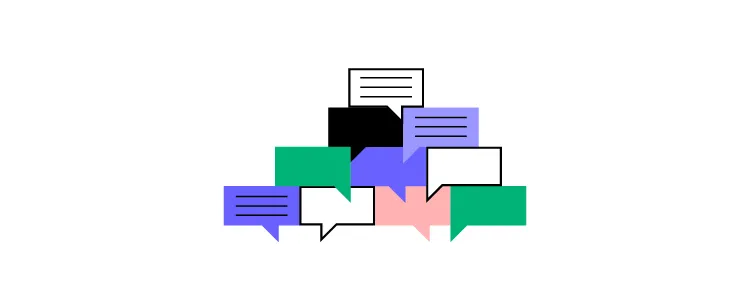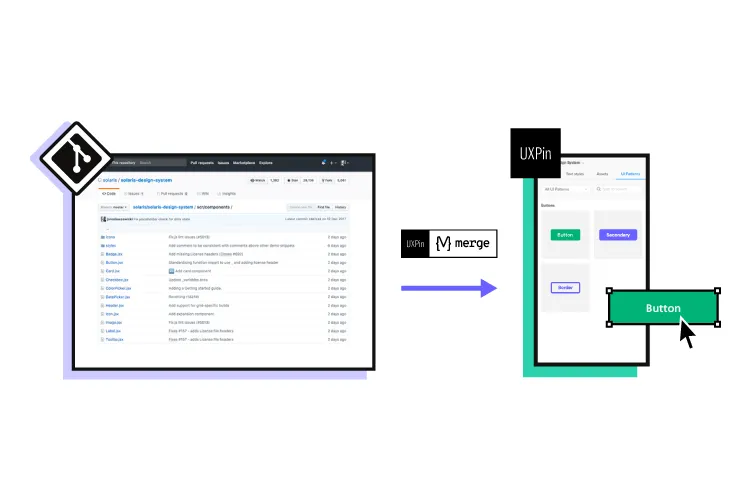Top Frameworks of DesignOps – Lessons from Salome Mortazavi
At UXPin’s Design Value Conference in March 2022, we hosted five design industry leaders to understand Design and DesignOps at some of the world’s biggest organizations.
We were honored to have Salomé Mortazavi share her insights and experience from working with multiple Fortune 500 organizations helping to “break down silos to align teams around customer outcomes rather than outputs.”
Salomé currently works as Director of DesignOps at SiriusXM. Her Design Value Conference talk covered proving DesignOps and business impact–a crucial factor for getting buy-in for maintaining and scaling design operations within an organization.
Advice for DesignOps Beginners
Salomé begins her talk with advice for DesignOps beginners–which could also apply to experienced practitioners who find themselves playing “whack-a-mole” instead of focusing on tactical and strategic initiatives.
The first piece of advice is to refrain from being a “yes person.” In their quest to make an impact, many DesignOps practitioners make the mistake of saying yes to everything early on. This approach pulls DesignOps in several directions, adversely affecting the team’s focus and value.
Finding Value
“At the core of everything we do, regardless of your background, everything comes down to being value-driven–delivering value and business impact.” Salomé Mortazavi, Director of DesignOps at SiriusXM
According to Salomé, everything in business value manifests itself in two ways:
- Reducing costs
- Increasing revenue
DesignOps practitioners must use the right metric to measure DesignOps’ impact. Patrizia Bertini simplifies this DesignOps framework by defining the metric in terms of efficacy vs. efficiency.
Efficiency vs. Efficacy
- Efficacy: Qualitative metrics based on behavior and doing work the “right” way
- Efficiency: Measurable and quantifiable using numbers, percentages, and ratios
We recommend reading ROI of DesignOps: All You Need to Know About Quantifying DesignOps’ Impact to go deeper into Patrizia Bertini’s framework.
Even with Patrizia’s simplified framework, there is much work DesignOps practitioners must do to measure efficacy and efficiency and find focus. As Salomé points out, 70% of DesignOps departments are a team of one–making it challenging to find direction and decide where to start.
Listen and Take Notes
Instead of jumping in and taking action, Salomé recommends that DesignOps practitioners take a step back and listen to design teams, including one-on-one interviews to understand the organization’s problems and identify patterns.
Take a few weeks or months to understand the bigger picture, the space, the org’s baseline practices, and people, as this will expose the company’s organizational and systemic problems.
Understanding and articulating these issues will help DesignOps practitioners build immediate trust with leaders, team members, and stakeholders–creating a positive foundation for DesignOps to grow.
Salomé says this approach works for DesignOps beginners and experts looking for a fresh start or new direction.
DesignOps Framework: Design Maturity Index
One of Salomé’s favorite DesignOps frameworks is the Design Maturity Index, specifically the New Design Frontier model, which looks at the nine dimensions of maturity:
- Design Team
- Key Partners
- Executives & Employees
- Design Operations
- Design Systems
- Design Strategy
- User Research
- Testing & Learning
- UI Design
The report looks at the most important impact design can have on an organization, including:
- Product usability
- Customer satisfaction
- Revenue
- Project-specific metrics
- Cost savings
- Time to market
- Conversions/funnel metrics
- Employee productivity
- Brand equity
- Entry into new markets
- Design patents/IP
- Valuation/share price
A Design Maturity Index produces a lot of themes and problems. Some of these the DesignOps must solve, while others will fall on design leadership.
Salomé says it’s crucial to assign these problems correctly into two or more buckets depending on your organization’s structure:
- DesignOps (Design Org Ops)
- Design Leadership/Design Team/Product (Design Practice Ops)
Operational Menu Tool
One way to organize your buckets is by using an operational menu tool to assign activities into several categories and subcategories. Salomé likes to create two menus:
- Design Org Ops: DesignOps activities
- Design Practice Ops: Design team, leadership, and product activities
We recommend watching Salome’s Design Value Conference talk around 12:48 for an explanation of this operational menu tool and a graphic with the various buckets.
Once you have filled your buckets, it’s time to find focus by planning your DesignOps roadmap.
Creating a DesignOps Roadmap

Salomé uses an outcomes-based tool to build her DesignOps roadmap into three generalized time horizons:
- Now
- Next
- Later
These time horizons allow DesignOps practitioners to avoid arbitrary deadlines. This flexibility enables DesignOps to experiment with solutions you’re piloting with different teams.
The roadmap must include five categories:
- Goals/OKRs
- Time horizons
- Themes/problems to solve
- Measure of success/KRS
- Parking lot
The parking lot is for keeping track of the tasks and activities that aren’t on your roadmap but require action at a future date.
Build, Measure, Learn
To implement her DesignOps roadmap, Salomé uses the popular Build, Measure, Learn (BML) design thinking methodology applied to operational practices.
Salomé likes to emphasize the importance of learning in BML for DesignOps practitioners to make educated decisions as they evolve a process or solution.
You can watch Salomé’s presentation at 18:00 for an example of her DesignOps framework in action.
Salomé’s DesignOps Resources

- Book: Liftoff: Practical Design Leadership to Elevate Your Team, Your Organization, and You
- Book: Lean UX
- Book: Outcomes over Outputs
- Report: The New Design Frontier
- Community: DesignOps Assembly
Bonus resources
- eBook: DesignOps 101: Guide to Design Operations written by six industry experts from IBM, Salesforce, and Delivery Hero.
- eBook: DesignOps Pillar: How We Work Together with quotes from DesignOps leaders at Roche, Citrix, Dixa, Salesforce, etc.
DesignOps With UXPin Merge
Finding tools to streamline design processes and workflows is crucial for implementing a successful DesignOps strategy. Design drift, collaboration, consistency, and cohesion are problems practitioners often have to overcome.

UXPin Merge enables DesignOps to solve these core problems with a single code-based design solution. Merge allows you to sync a component library from a repository to UXPin’s editor so designers can build fully functioning high-fidelity prototypes using the same UI elements as engineers.
This single source of truth means every design team works with the same component library, maximizing consistency and cohesion while eliminating design drift and reducing rework.
Design handoffs run smoother with UXPin Merge because designers and engineers speak the same language, thus reducing time-to-market and creating a positive ROI for DesignOps.

